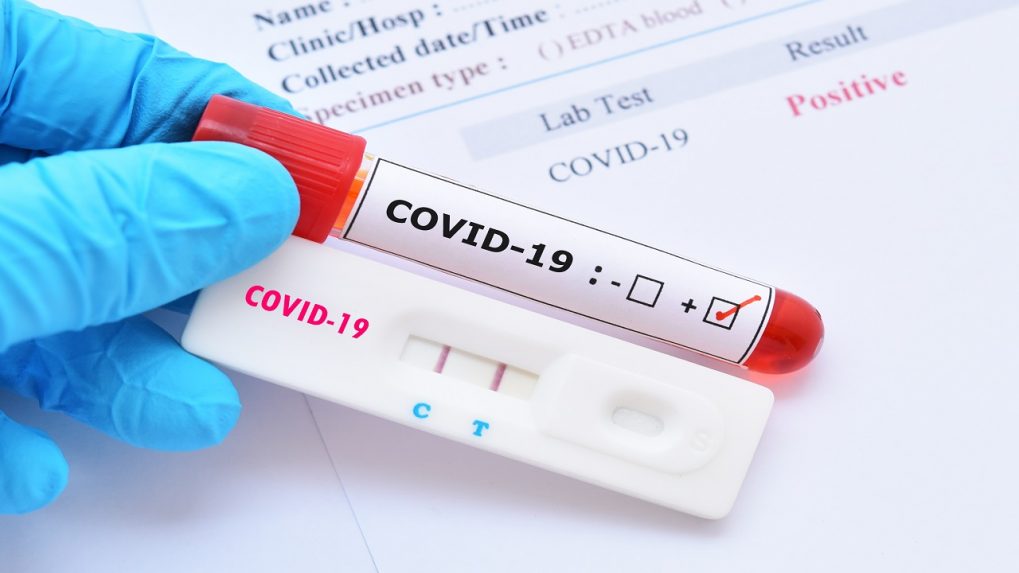We are now pretty used to wiping our noses to test for COVID-19 when we have a scratchy throat or a new cough.
But should we also use our rapid antigen test (RAT) to swab our throats, as some social media sources suggest?
Because people with an Omicron infection often develop a sore throat early on, they reason that Omicron is first found in the throat.
So wiping the throat and nose together, some social media sources say, increases the chance of accurately detecting an infection.
Tweet from @M_L_Carpenter

A sore throat is more common with Omicron than Delta. However, this does not mean you should use your nasal RAT to swab your throat on Omicron. It is best to follow the instructions on the package.
Remember, what are the different types of RATs?
There are several ways to test for COVID-19 using a RAT.
Oral samples may include saliva (spit in a tube), saliva from a tongue or cheek swab, or a throat swab (tonsil area).
Nasal samples may be taken from the nose’s front (anterior), middle, or back (nasopharyngeal).
There are also many different brands of RAT. Their ability to detect a positive case depends on the brand, variant, whether the person has symptoms, and their viral load at the time of the test.
What Do Studies Say About Nose Vs.? Throat RATs?
It’s complicated. The time lag between researchers conducting a study and its publication means that studies comparing sampling methods were largely conducted before Omicron or the widespread use of RATs.
A systematic review of 23 pre-Omicron studies found that nose and throat samples tested together were more sensitive (meaning they accurately detected a positive case) than nose samples alone: 97 percent versus 86 percent.
However, these were swabs taken independently (with two separate swabs – one for the nose and one for the throat) and then combined at the point of sample testing, rather than taking a combined nose/throat swab (in which the nose is swabbed and then the throat is swabbed with the same swab or vice versa). They also used PCRs instead of RATs.
A study conducted during the Omicron wave tested 49 people with PCR-confirmed COVID who had both nose and throat swabs. It found that 86 percent of positive cases were picked up by nasal swabs on a RAT, compared with 47 percent detected by the throat and 89 percent by both methods.
This suggests that Omicron is not more easily detected in the throat. Adding a throat swab did not result in many extra cases (3 percent).
Clearing your throat doesn’t seem to pick up many extra positives. Photo: Getty
However, a preprint study, yet to be peer-reviewed (audited by independent scientists), reports conflicting results.
In this study, individual nose and throat swabs detected 64.5 percent of infections. But some nasal samples tested positive when the throat swab was negative and vice versa. About 89 percent of positive cases were identified by performing both tests separately.
When individual nasal swabs were compared to a combined nose/throat swab, the nasal swabs picked up about 68 percent of cases, while the combined swab picked up about 82 percent.
In summary, of the two recent studies that included an Omicron sample, the published study found that nasal swabs were much more effective than throat swabs at detecting COVID.
And if the results of both tests were combined, only 3 percent of the additional cases would be detected.
The preprinted (unpublished) study reports conflicting results, suggesting that a combined nose/throat swab would pick up an additional 14 percent of cases.
Does Omicron appear first or at higher levels in the throat?
One study found that those with Omicron were 9 percent more likely to report a sore throat than those with Delta, while the latter were more likely to report a runny nose and sneezing.
However, when comparing saliva from a throat swab to a deep nasal swab in a study of 624 people, researchers found more viruses (known as viral load) in the deep nasal swabs than in saliva tests.
A test is more likely to detect a positive case when the viral load increases.
The researchers found more virus in the nasal swab regardless of the day the sample was collected, suggesting that the virus does not appear earlier in the throat.
Detection of COVID in throat saliva was 4 percent less likely in Omicron compared to Delta cases, suggesting that Omicron does not increase viral saliva in the throat either.
However, it’s important to note that the nasal swabs we take at home are unlikely to go as deep as those in this study, which could affect the results.
The virus doesn’t seem to be the first to appear in the throat. Photo: Getty
Other things to consider
The type of swab also differs depending on whether it is designed for a nasal or oral test. It may not always be appropriate to sample a different area due to differences in the shape and flexibility of the swab.
The pH (a measure of acidity) also differs in the throat and nose, and an altered pH can affect COVID test function and potentially,lyffect the result.
So what should you do?
The Australian regulator’s website, the Therapeutic Goods Administration, recommends having a nasal or oral test, as the instructions indicate.
Likewise, the U.S. Food and Drug Administration recommends closely following RAT instructions.
While the UK National Health Service (UK) website refers to swabbing the throat and nose, it uses a RAT kit to do both.
Since there is currently no clear evidence that Omicron appears earlier or at higher levels in the throat, and RATs are designed and tested for the specific area being sampled, it makes sense to continue to follow the testing instructions.
If you want to sample both areas, using two separate tests designed for them is best.
Thea van de Mortel, Professor of Nursing and Deputy Head (Learning & Teaching), School of Nursing and Midwifery, Griffith University

